Washington, D.C./Museum and Newseum
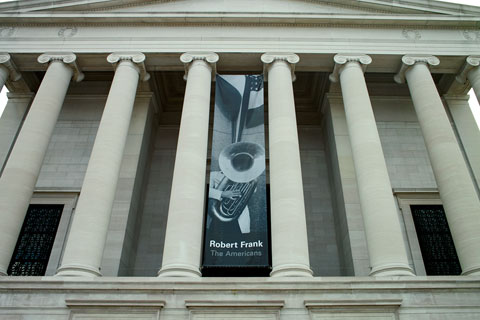
The National Gallery of Art and Robert Frank banner -- © Brian Rose
I managed to see two exhibits at the National Gallery of Art in the whirlwind visit to Washington, D.C. made with my 10 year old son Brendan--Robert Frank's the Americans and Pride of Place, Dutch Cityscapes of the Golden Age. I don't know which show to recommend more; they are both fabulous.
The first examines the making of Robert Frank's book The Americans, in my estimation the greatest of all photography books. Since The Americans deserves a more thorough review than I'm prepared to do now, I'll leave it for another time. It's worth going out of your way to visit D.C.to see it, but if you can't, the museum's website provides a nice taste. I've only glanced at the accompanying book, but will probably buy it the next time I'm at the Strand in New York.
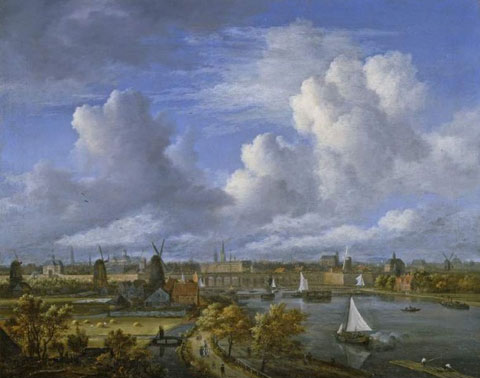
Jacob van Ruisdael, View on the Amstel looking towards Amsterdam
Cambridge, Fitzwilliam Museum
The second exhibition looks at the way in which cities and their surrounding landscapes were depicted by Dutch painters and mapmakers. Many of the paintings combine the sweep of the horizontal Dutch landscape punctuated by church spires and windmills with meticulous detail from foreground to background, at once expressing pride in civic achievement while taking note of ordinary citizens in city squares and at the threshhold between public and private life.
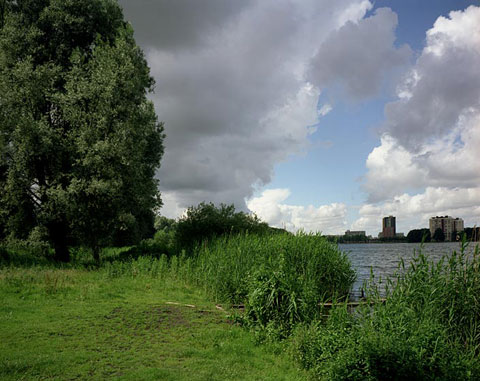
Sloterplas, Amsterdam -- © Brian Rose
These paintings always make me think of the way a view camera can be used to take in breadth and detail--and in that regard I have always found these Dutch paintings inspiring--something I have kept in mind, in particular, while photographing the periphery of Amsterdam.
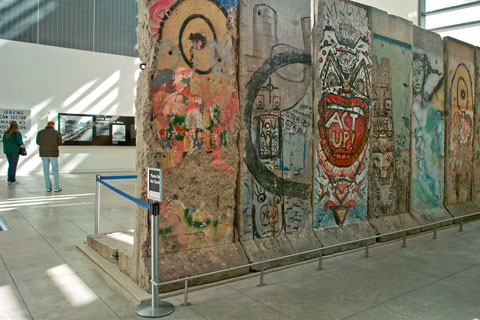
Berlin Wall exhibit at the Newseum -- © Brian Rose
For obvious reasons, I was especially interested in seeing the Berlin Wall exhibit at the Newseum, a new institution dedicated to the history of journalism and freedom of the press. It's located on Pennsylvania Avenue just across from the National Gallery. The Wall installation includes a number of original concrete sections placed next to each other to form a stretch of wall about 25 feet across. It looks incomplete to me, however, without the slotted pipe along the top, which was used to make climbing over more difficult. There is also an original guard tower, typical of those used in Berlin and elsewhere along the East/West German border rising up several stories in the exhibit space adjacent to the museum's glass elevators.
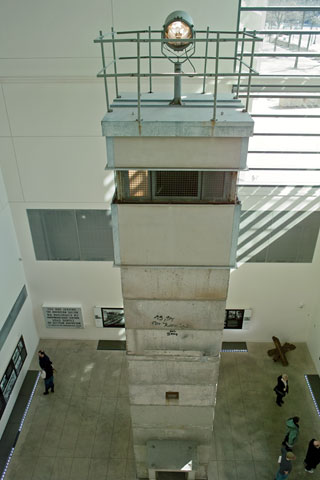
East German guard tower -- © Brian Rose
As is so often the case, the fact that fortifications extended most of the way across Europe is largely left out. Meaning that most people do not understand that Berlin was a separate enclave within East Germany surrounded by the Wall, and not part of the continuous line of fences and walls that ran along the East German, Czech, and Hungarian borders--with a heavily guarded Yugoslav border completing the partioning of Europe down to the Adriatic Sea.
That complaint aside, I am happy to see the Newseum give the Wall so much attention. It was the most potent symbol of the Cold War--and, in retrospect, hard to believe that such a thing could have existed. The Newseum is a pretty glitzy place full of multi-media and interactive displays, but my son loved it, and there was enough serious content to offset the fluff. I was also pleased to see a memorial to journalists killed in the line of their unique and important duty--reporting the news and disseminating the truth. Such a memorial deserves a place of honor on the Mall along with all the others.

0 Comments:
Post a Comment
Links to this post:
Create a Link
<< Home